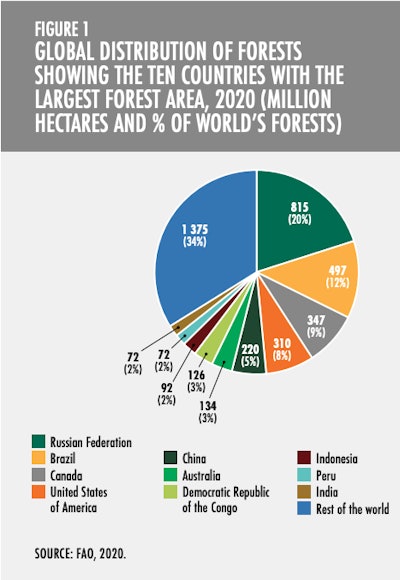

The rate of forest area decline has slowed by 40% over the past three decades, falling from an estimated 7.8 million (30,115 square miles) hectares per year in the 1990s to an estimated 4.7 million hectares (18,146 square miles) per year between 2010–2020.
Deforestation had an estimated global rate of 10 million hectares (38,610 square miles) per year between 2015 and 2020. While the deforestation rate remains “alarming,” the UN noted that the deforestation rate slowed from an estimated 16 million hectares (61,776 square miles) per year in the 1990s. The net loss of forest area is less than the rate of deforestation because new forests are being established “through natural expansion or deliberate efforts,” the report states.
The main driver of global deforestation is agricultural expansion, according to the report.
The report also reports on illegal logging, which it says remains a persistent problem for the world’s forests. In 2016, the International Criminal Police Organization estimated the value of forestry crimes and illegal logging was between $51–152 billion annually.
“The demand for timber is so great that illegal logging will remain a major concern for the future of forest resources unless consistent efforts are made globally to control it,” the report states.
The report concludes that global sustainable development goals are not on track to be met by 2030.
“Given that agricultural expansion is the main driver of deforestation, the biggest transformational change is needed in the way in which we produce and consume food,” the report states.
The full UN report can be found here.























